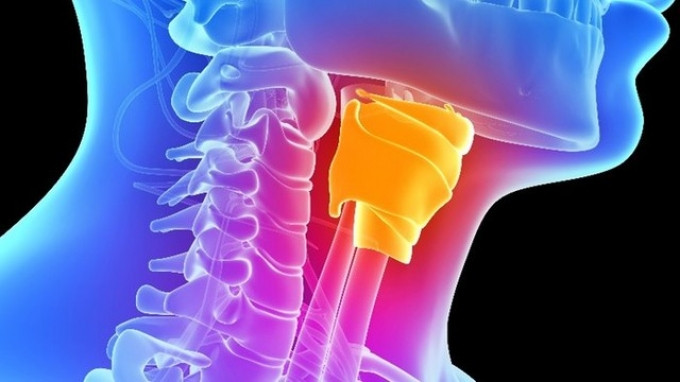The culture successfully implements the artificial vocal cords that help mute people speak
To date, Dr. Nathan Welham has argued that the replacement of a damaged human vocal cords is theoretically possible.
Scientists successfully cultivate artificial vocal cords
Those who accidentally lose their speech ability due to vocal cord rupture or laryngeal cancer can completely hope to recover their voice thanks to the artificial vocal cords from Biological laboratories. It is worth noting that these artificial parts can act like real parts and they are fully capable of replacing damaged vocal cords.

Scientists at the University of Wisconsin-Madison (USA) have become the first to carry out the process of culturing larynx tissues in the laboratory by collecting cells that make up the larynx tissue of the child. people, then sterilize and install them into a frame made of 3D materials shaped like the vocal cords of people. The cells continue to grow within 2 weeks later, they gradually form a "vocal cords" with the same viscosity and elasticity as the human root.
To test the performance of this implant, the research team conducted testing it on the larynx of a dead dog.The artificial vocal cords are attached to the dog's trachea, then a stream of air is blown through the area to simulate the sound of the vocal cords when the dog is still alive. The result is quite satisfactory when the vibrating frequency of this artificial part is not too big compared to its real version. Next, to test the body's compatibility with the artificial part, the scientists transplanted the wall of the gonad to a DNA-regulated laboratory mouse to have a similar immune system. like people. After successful and follow-up transplants within 3 months, the mouse did not exhibit a strange expression on the biological indicators as well as the body of the laboratory that accepted this artificial part normally.
Artificial vocal cords from the laboratory.
Dr. Nathan Welham, a sound pathologist and head of the study, said that the human vocal cords will take up to 13 years to fully develop so if they are hurt, they will It is difficult to recover, while with the vocal cords, it takes only a few months for these biological products to function as real things. One problem that he and his colleagues are very interested in is that this project is based only on real laryngeal cord tissue, but their supply is quite limited due to a high reliance on donations from patients who have died. Therefore, Dr. Welham asserted that if it is possible to successfully develop an artificial stem line from new stem cells , it is indeed a significant step forward.
At the present time, Dr. Nathan Welham assumes that the replacement of the damaged human vocal cords is theoretically feasible, but it will take a little bit of time for him and his colleagues. colleagues completed their research further before conducting a test on human bodies.
- Concave ear frogs call their partners with ultrasound
- Secret of throat protection to cheer U23 Vietnam in the historical final
- Why do women often have higher voices and voices than men?
- Successfully developed an artificial arm that can feel real
- Hats help mute spelling
- Gibbon species have the ability to sing like professional opera singers
- The magic glove, translating the sign of the deaf and mute into words
- The patch helps keep track of stroke and cancer patients
- People fly successfully with artificial wings
- Artificial skin has hair and sweat glands
- Artificial Neuralgia delivers life for prosthetic limbs
- Successfully cultured new shaped jellyfish
 Green tea cleans teeth better than mouthwash?
Green tea cleans teeth better than mouthwash? Death kiss: This is why you should not let anyone kiss your baby's lips
Death kiss: This is why you should not let anyone kiss your baby's lips What is salmonellosis?
What is salmonellosis? Caution should be exercised when using aloe vera through eating and drinking
Caution should be exercised when using aloe vera through eating and drinking Why does the mouth make sounds?
Why does the mouth make sounds?  Why do women often have higher voices and voices than men?
Why do women often have higher voices and voices than men?  Gibbon species have the ability to sing like professional opera singers
Gibbon species have the ability to sing like professional opera singers  Secret of throat protection to cheer U23 Vietnam in the historical final
Secret of throat protection to cheer U23 Vietnam in the historical final  The baby cannot cry
The baby cannot cry 